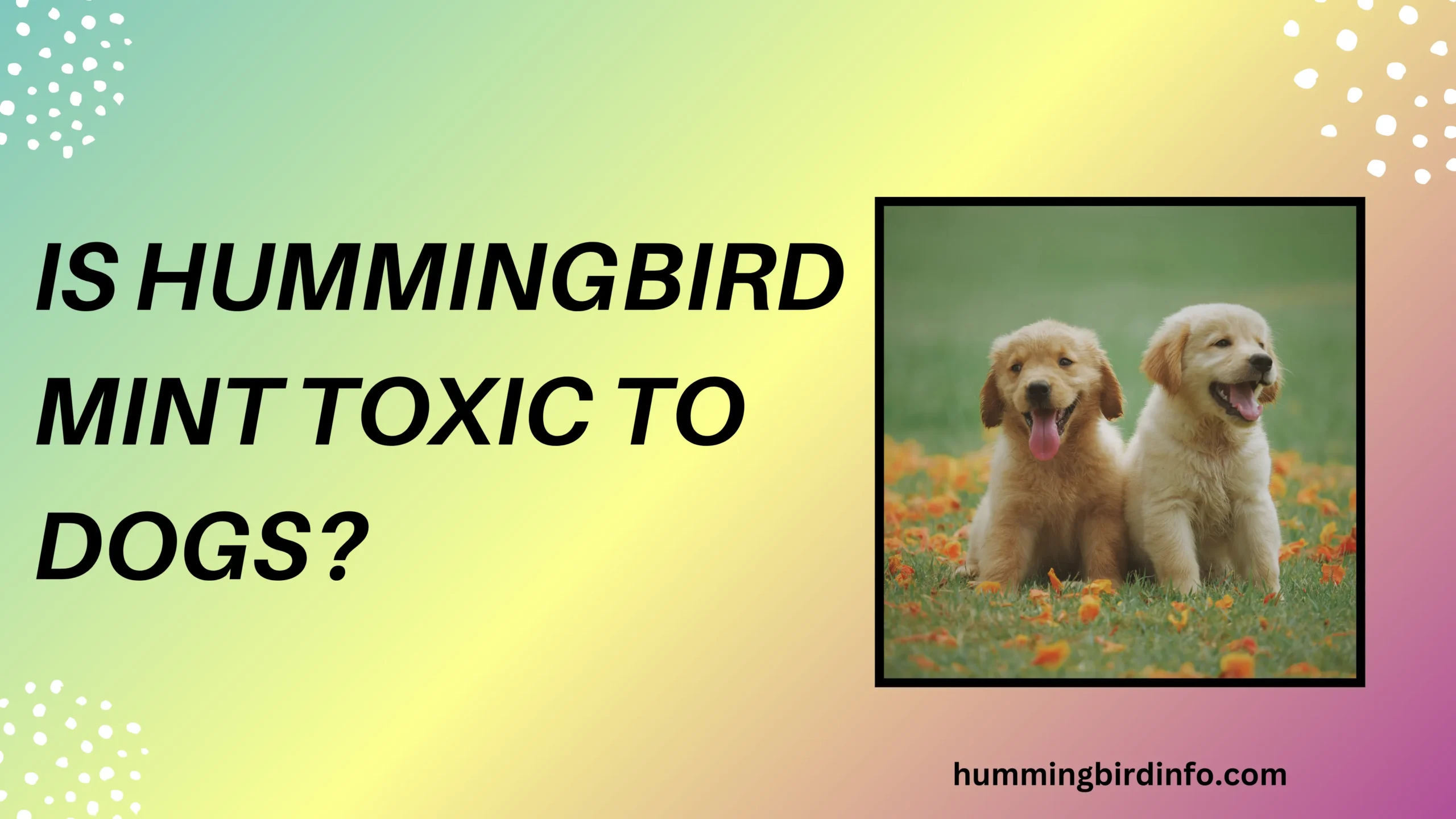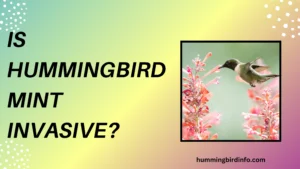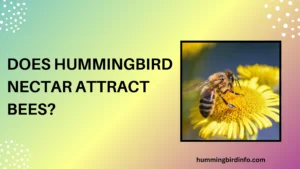Hummingbird mint, also known as Agastache, is a beloved garden plant known for its vibrant blooms and minty aroma. Gardeners adore it for its ability to attract hummingbirds, bees, and butterflies, while also offering a long blooming period, fragrant foliage, and a wide variety of colors.
But for dog owners, one question often lingers—is it safe for my dog?
As more families turn their gardens into lush sanctuaries, the safety of pets becomes a top concern. Dogs are curious by nature—they explore the world with their noses and mouths, often nibbling on whatever catches their attention.
This raises an important issue: can plants like hummingbird mint be harmful if your furry friend decides to take a bite?
In this post, we’ll explore whether hummingbird mint is toxic to dogs, drawing on science, veterinary advice, and common gardening wisdom. We’ll dig deep into its chemical makeup, potential symptoms of toxicity, expert opinions, and prevention strategies.
If you’re a pet-loving gardener, read on to ensure your outdoor oasis is both beautiful and safe.
Contents
- 1 Understanding Hummingbird Mint (Agastache)
- 2 Chemical Compounds in Agastache
- 3 Scientific Literature on Toxicity
- 4 Expert Opinions
- 5 Symptoms of Potential Poisoning
- 6 First Aid and Treatment
- 7 Preventive Measures
- 8 Conclusion
- 9 FAQs
- 9.1 1. Is hummingbird mint toxic to dogs?
- 9.2 2. What happens if my dog eats hummingbird mint?
- 9.3 3. Should I remove hummingbird mint from my garden if I have a dog?
- 9.4 4. Can essential oils from hummingbird mint harm my dog?
- 9.5 5. Are all Agastache species safe for dogs?
- 9.6 6. Is Agastache safe for puppies?
Understanding Hummingbird Mint (Agastache)
Agastache is a genus of flowering plants in the Lamiaceae family, the same family as mint, basil, and lavender. It’s a herbaceous perennial known for its upright growth and fragrant leaves.
Depending on the species, Agastache typically grows between 2 to 4 feet tall with spiked flower clusters.
Hummingbird mint is native to North America, though some species also come from Asia. It thrives in well-drained soils and sunny spots, making it a popular choice for xeriscaping and pollinator-friendly gardens. The genus includes dozens of species, each with its own unique qualities.
One of Agastache’s key features is its aromatic leaves, which release a minty or licorice scent when crushed. The flowers are tubular and brightly colored, ranging from pink and purple to orange and red, attracting not just pollinators but also garden enthusiasts.
Popular species include Agastache foeniculum (anise hyssop), Agastache cana (Texas hummingbird mint), and Agastache rugosa (Korean mint). Cultivars like ‘Blue Fortune’, ‘Black Adder’, and the ‘Kudos’ series are commonly grown.
Each type may differ slightly in size, aroma, and chemical composition.
Understanding the plant’s structure and makeup is crucial for identifying any potential risk to dogs. While it’s a garden superstar, not all beautiful plants are entirely pet-friendly.

Chemical Compounds in Agastache
Agastache owes its fragrance to its rich content of volatile oils. These oils contain compounds such as anethole, limonene, and menthone, which contribute to its minty, sweet scent. These same compounds are often used in flavorings and herbal remedies.
In addition to aromatic oils, Agastache contains terpenoids, flavonoids, and phenolic acids. These phytochemicals are known for their antioxidant and antimicrobial properties, making Agastache a traditional choice in herbal medicine and teas for humans.
Although these compounds are generally harmless in small amounts, some may act as mild irritants, especially when consumed in large quantities. This can be particularly important for dogs with sensitive digestive systems or allergies.
Essential oils, in their concentrated form, can pose a greater risk than the plant itself. However, in its natural garden state, the oils in Agastache are significantly diluted, reducing the likelihood of adverse effects.
So, while Agastache does contain bioactive compounds, they are not inherently toxic. However, every dog is different, and sensitivity can vary, which makes understanding the risks more important than assuming safety.
Scientific Literature on Toxicity
Despite Agastache’s popularity, there is a notable lack of comprehensive studies directly linking it to toxicity in dogs. Most scientific research focuses on its use in human herbal medicine, with limited veterinary attention.
Studies on other members of the Lamiaceae family, like peppermint and oregano, have shown low toxicity to pets when ingested in small amounts. These findings support the idea that Agastache is likely non-toxic, but confirmation remains limited.
Veterinary databases like the ASPCA Animal Poison Control Center and Pet Poison Helpline do not list Agastache as toxic. This is generally a good sign, though it does not rule out the possibility of mild adverse reactions in certain dogs.
Some anecdotal case reports from veterinarians suggest dogs who nibble on Agastache may occasionally experience gastrointestinal upset, but these cases are rare and often resolve without treatment.
Overall, the scientific consensus seems to indicate that Agastache has a low toxicity profile for dogs. However, the absence of toxicity reports does not always equal guaranteed safety, especially in large quantities or with repeated exposure.
Expert Opinions
Veterinarians generally agree that Agastache poses minimal risk to dogs. Most professionals classify it among non-toxic plants, though they caution pet owners to monitor their dogs for unusual behavior or symptoms.
From a toxicologist’s point of view, the concentration of active compounds in Agastache is too low to cause serious harm. Toxic doses of anethole or menthone would require dogs to eat very large amounts, which is rare given the plant’s strong flavor.
Herbalists often use Agastache in teas and tinctures for its calming and digestive properties. While these uses are human-specific, it does suggest a general level of safety and tolerability for mammals.
Still, all experts agree that individual sensitivity plays a role. Dogs with pre-existing conditions or allergies may react differently, and puppies are especially prone to eating unfamiliar objects out of curiosity.
The collective view is one of low concern, but it comes with the reminder that even non-toxic plants can occasionally cause issues. Observation and moderation are the best tools in any pet-safe garden.
Symptoms of Potential Poisoning
In the rare event that a dog does have a reaction to Agastache, symptoms are usually mild and gastrointestinal. This might include vomiting, diarrhea, or a general loss of appetite.
Some dogs may also show signs of excessive drooling or licking, especially if the leaves irritate their mouth. These effects typically pass on their own within a few hours.
Serious symptoms, such as lethargy, tremors, or swelling, are extremely rare. However, if they do occur, they may indicate an allergic reaction or sensitivity, requiring prompt veterinary attention.
Pet owners should monitor their dog for signs of discomfort after ingesting any unfamiliar plant. If your dog ate a significant amount of Agastache and appears sick, it’s best to call your vet.
While unlikely to cause harm, it’s always wise to act with caution. Knowing what symptoms to watch for can make all the difference in ensuring your pet’s safety and peace of mind.
First Aid and Treatment
If you suspect your dog has ingested Agastache, the first step is to remove any plant material from their mouth gently. Offer them fresh water to rinse and soothe their mouth and throat.
Call your veterinarian or the ASPCA poison hotline for immediate advice. Don’t attempt to induce vomiting unless instructed by a professional.
Veterinary treatment, if needed, may include anti-nausea medication, activated charcoal, or fluid therapy to ease symptoms and prevent dehydration. Most cases resolve quickly with basic supportive care.

Preventive Measures
The best way to keep your dog safe is through prevention. Plant Agastache in raised beds or areas that are less accessible to your pets, or install a small barrier or fence.
Train your dog to avoid eating plants using positive reinforcement techniques. Supervise them in the garden, especially when young or newly introduced to the space.
Consider pet-safe alternatives like calendula, basil, or catnip, which are not only safe but also beneficial to pollinators and easy to grow.
Creating a pet-safe garden isn’t about removing every plant—it’s about being mindful, informed, and attentive to your dog’s habits and behavior.
Conclusion
Agastache, or hummingbird mint, is a fragrant, colorful addition to many gardens. Fortunately, it is generally considered non-toxic to dogs, with only rare cases of mild symptoms if ingested.
While severe reactions are unlikely, pet owners should always stay cautious. Observe your dog after exposure, and if any symptoms appear, seek veterinary guidance.
Responsible pet ownership means creating a garden that is both safe and enjoyable. With a bit of care and planning, you can grow beautiful plants like Agastache without worrying about your canine friend’s well-being.
Enjoy your garden with confidence, knowing you’ve taken steps to keep it safe for every member of your family, including the four-legged ones.
FAQs
1. Is hummingbird mint toxic to dogs?
No, Agastache is not classified as toxic to dogs and is generally safe in most home gardens.
2. What happens if my dog eats hummingbird mint?
In most cases, your dog may experience mild digestive upset like vomiting or diarrhea, but serious symptoms are rare.
3. Should I remove hummingbird mint from my garden if I have a dog?
Not necessarily. You can keep it and take precautionary steps, like planting in fenced or elevated areas.
4. Can essential oils from hummingbird mint harm my dog?
Yes, concentrated essential oils from Agastache can cause issues and should be kept out of reach of pets.
5. Are all Agastache species safe for dogs?
Generally, yes. All commonly grown Agastache species have a low risk of toxicity, though monitoring is still wise.
6. Is Agastache safe for puppies?
While it’s not toxic, puppies are more prone to exploration and chewing, so extra care is recommended.








